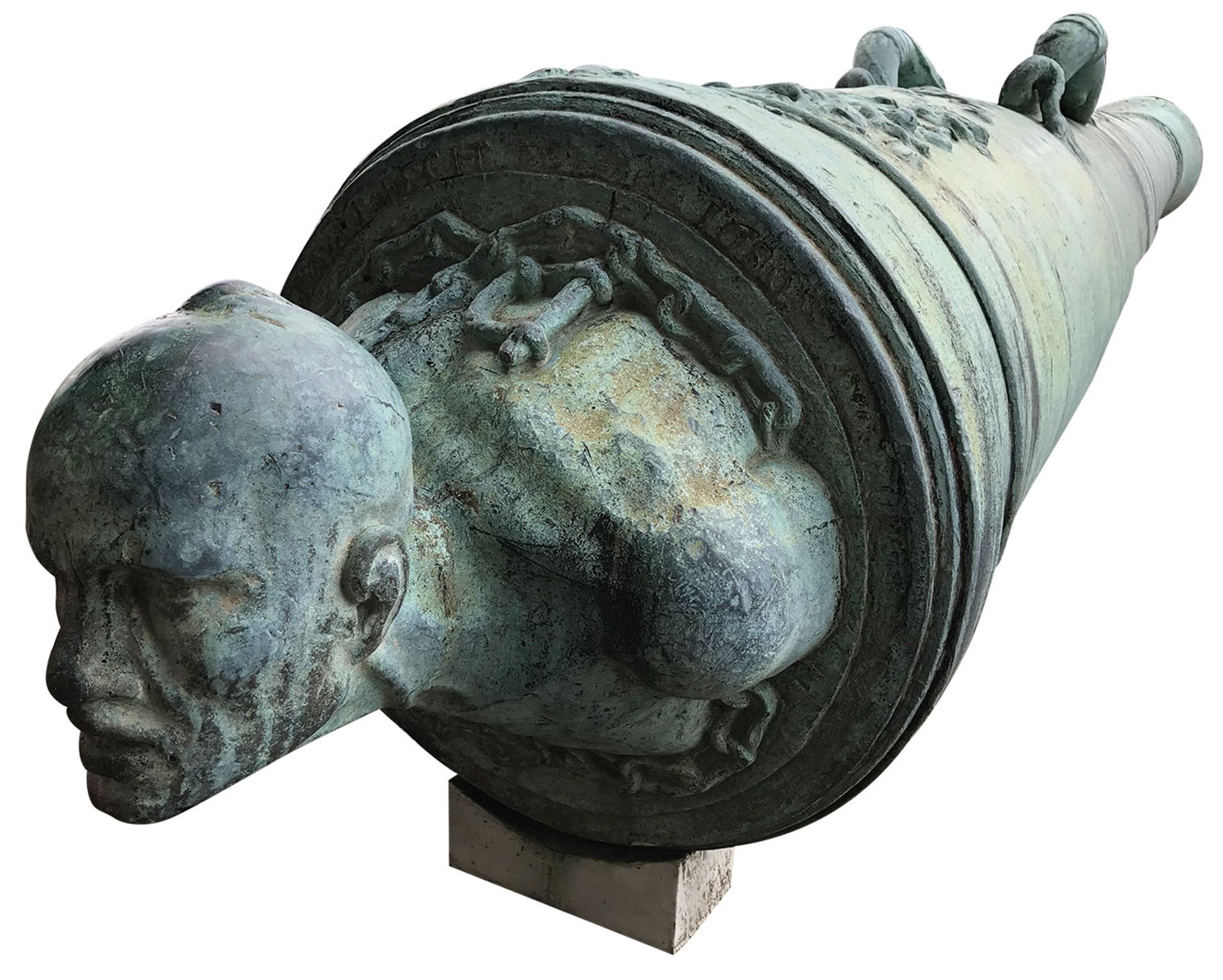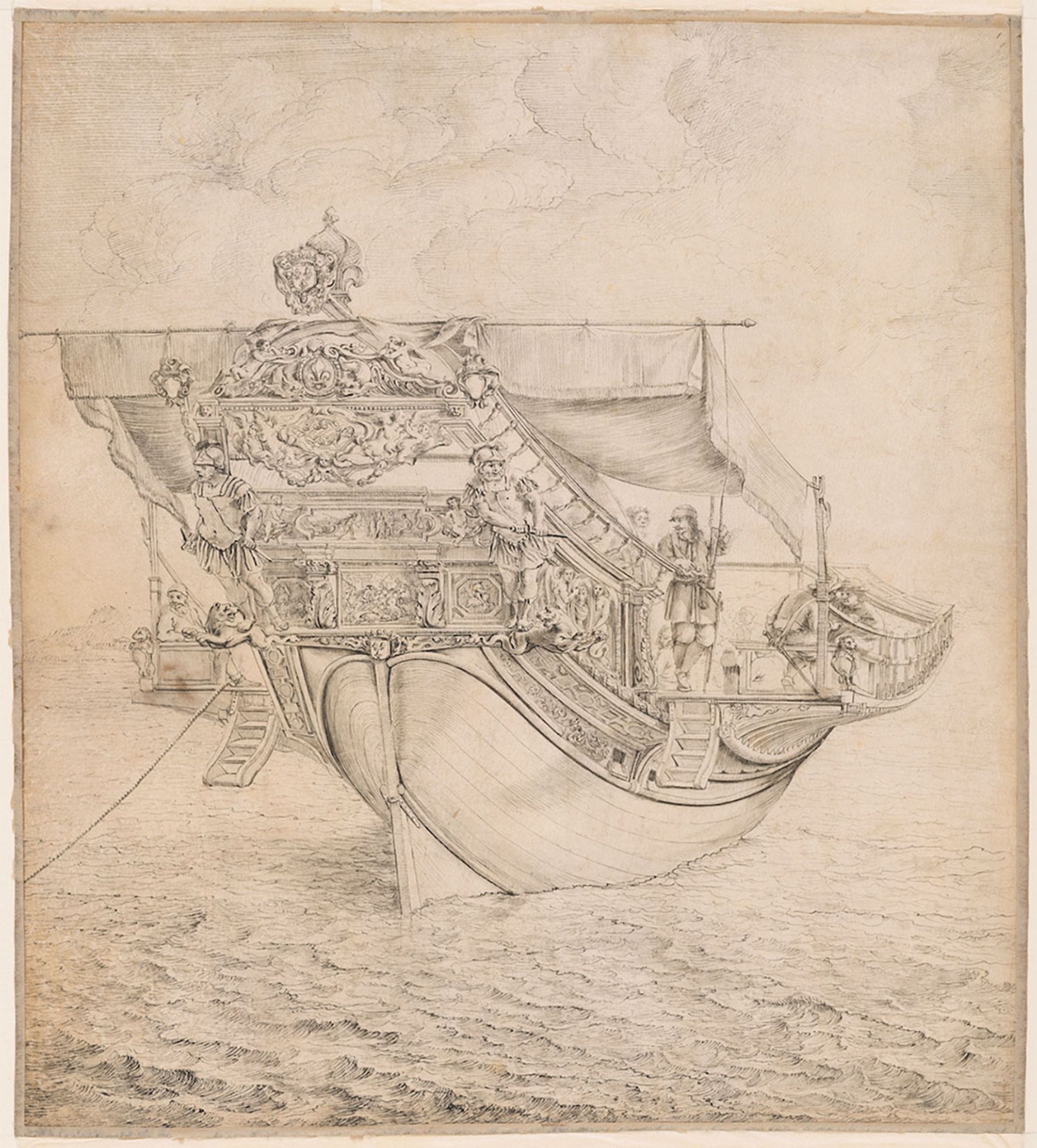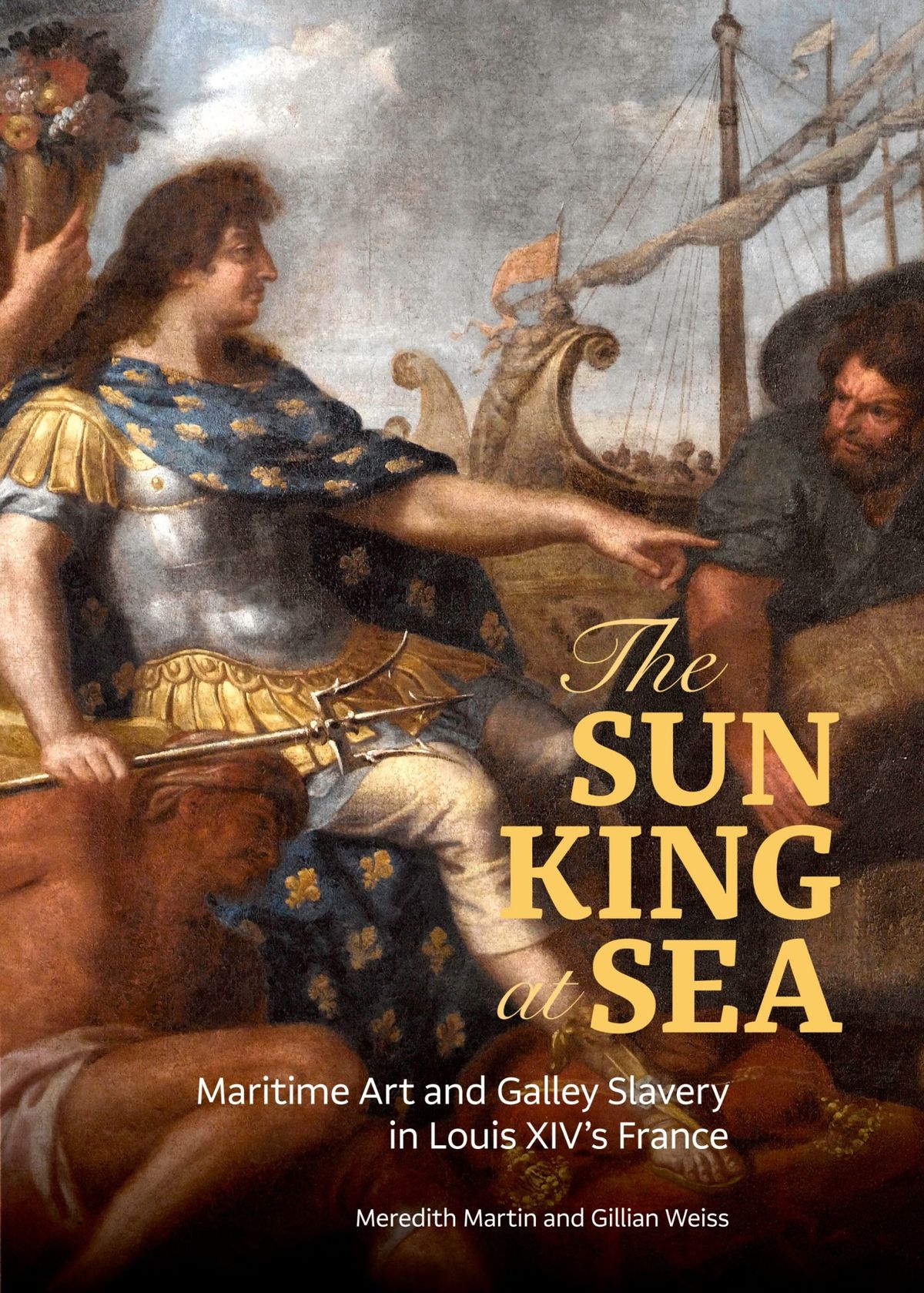The “Sun King” Louis XIV (reigned 1643-1715) was not only one of the most cultured kings of France, but one of the cruellest. He started wars, bombarded cities, and persecuted French protestants after the revocation of the Edict of Nantes in 1685. In addition, as Meredith Martin and Gillian Weiss show in this remarkable publication, he used enslaved people to row his galleys.
In theory there were no slaves in France: French soil made people free. Yet slaves—either bought in the Ottoman and North-African markets around the Eastern and Southern Mediterranean, recruited from criminals or, after 1685, protestants—were employed on the king’s galleys. Their numbers rose from around 300 in 1664 to 2,000 in 1670. After 1700 they declined, until the galley corps—considered unsuitable for modern naval warfare—was abolished in 1748.
Slaves also became an integral part of the local economy of Marseilles, the French navy’s base for the Levant Fleet galleys. When the ships were not at sea, enslaved men, still in chains, worked for Marseilles merchants or ran shops on the quays. Others were personal servants or artists’ models. Louis’s great minister, Jean-Baptiste Colbert had a Turkish servant called Mustapha, who later had the rare privilege of returning to his homeland. Indeed, so many of the galley slaves were Muslims that in 1723 fights broke out in Marseilles between the Sunni and Shia among them.

A 36-pound bronze cannon decorated with the head of a Turk by Jean Baubé (1680), which now sits outside the Musée National de la Marine, Brest Musée National de la Marine, Brest
Crucially, Louis was a commercial and strategic ally of the Ottomans and, at times, France relied on grain from the Ottoman Empire to save it from starvation. Yet one duty of the king’s consuls in that Empire was to supply his navy with slaves, both Christian and Muslim. Despite pleas from the Moroccan ambassadors to Louis’s court, healthy Muslim slaves were considered too valuable to the French navy to be freed or exchanged for Christian slaves in Muslim countries. (Only 4.5% of Muslim slaves converted to Christianity, despite the prospect of liberation from the galleys.)
Some of the galley slaves were Africans. At Versailles in the summer of 1680, in an episode uncovered by Martin and Weiss, 54 recently purchased slaves, dressed only in yellow shorts and showing skin, as a witness described, “of a black so gleaming that it seemed like varnish”, were inspected by the king prior to rowing a model galley on the grand canal in the palace’s grounds.

Pierre Puget, A Royal French Galley Seen from the Stern (1668-69), a pen and brush and black ink wash drawing on vellum Cooper Hewitt, Smithsonian Design Museum, New York
This book is well produced and researched, with many previously unpublished illustrations including a list of galley slaves (Ahmet de Smyrne, Moustapha de Bellegrade and others); contemporary prints and drawings of galleys and their sculpted decoration; and views of Marseilles. As symbols of sovereignty, as well as a Catholic “crusading” zeal which in reality Louis XIV did not possess—he encouraged Ottoman attacks on the Habsburg monarchy—Muslim slaves were also shown, chained and turbaned, in a fresco on the ceiling of Versailles’s Hall of Mirrors and in sculptural form at the king’s feet on the sterns of his ships.
Martin and Weiss do not set out Louis’s use of galley slaves in relation to other European monarchs, nor in the context of what Ottomans or Moroccans were doing.
And there is some moralising language: Madame Palatine, the king’s sister-in-law, was not a “war prize” as stated, but a valued royal bride with a household almost as large as the queen’s. Nevertheless, this is a valuable corrective to the adulation still found in many books on Louis XIV. Cruelty and exploitation—also evident in the appalling death rate among the workers and soldiers who built Versailles and dug the park—were among the foundations of the Sun King’s power.
• Meredith Martin and Gillian Weiss, The Sun King at Sea: Maritime Art and Galley Slavery in Louis XIV’s France, Getty Publications, 256pp, 80 colour + 34 black-and-white illustrations, £45/$60 (hb), published 4 January
• Philip Mansel’s latest book is King of the World: the Life of Louis XIV (Penguin 2019). He is a co-founder of the Society for Court Studies


